Marking Tools [sumikake-dougu]
Sumikake-dogu
Sumikake-dogu
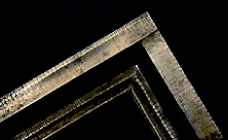
In Japan, the ink line remains in the original material of Horyuji Temple, so it is thought that ink pots were already used by this time. It seems that the original shape is that the two arms that fix the part that wraps the thread from the pot, and the car that winds the thread is attached to it. The prescientist calls this "butt crack type".
The ink pot excavated from the Eine archeological site in Hyogo Prefecture around the 8th century is a butt crack type. In addition, the "Forgotten Sumibo", which seems to be from the Middle Ages discovered from the South Gate of Todaiji Temple, is also a butt crack type.
How to use ink pots requires advanced knowledge and skills. It is thought that it was treated secretly until the Middle Ages, but as carpenter technology gradually spread, a box-shaped ink pot that fixes a thread wheel from the butt crack type to the cut-out part, and a ink pot with carvings It is thought that it has come to be used.
In addition, unlike other carpentry tools, ink pots were made by carpenters in the past. Therefore, it can be said to be the only tool that shows the design power and dexterity of carpenters.
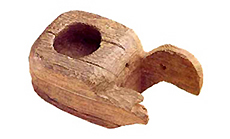
The 8th-century ink pot (reproduction, around the 8th century, the Ene archeological site in Hyogo Prefecture)
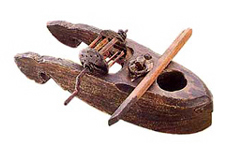
Inkpot and Bamboo Pen discovered from Nandaimon Higashiooji Temple (reproduction, 13th to 14th centuries, Todaiji Temple in Nara Prefecture)
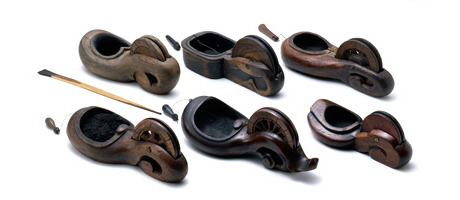
Various ink pots (1) [Hiroshima-type, shamisen-type, biwa-type from the back left. Genji type, young leaf type, boat type from the front left
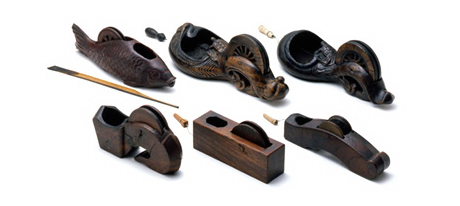
Various ink pots (2) [Koi-shaped, crane-shaped, turtle-shaped from the back left. Shrimp type, single character type, Junichi character type from the front left
※ The format name may differ depending on the classification method and region.
Basic information
Special Exhibition
Permanent exhibition